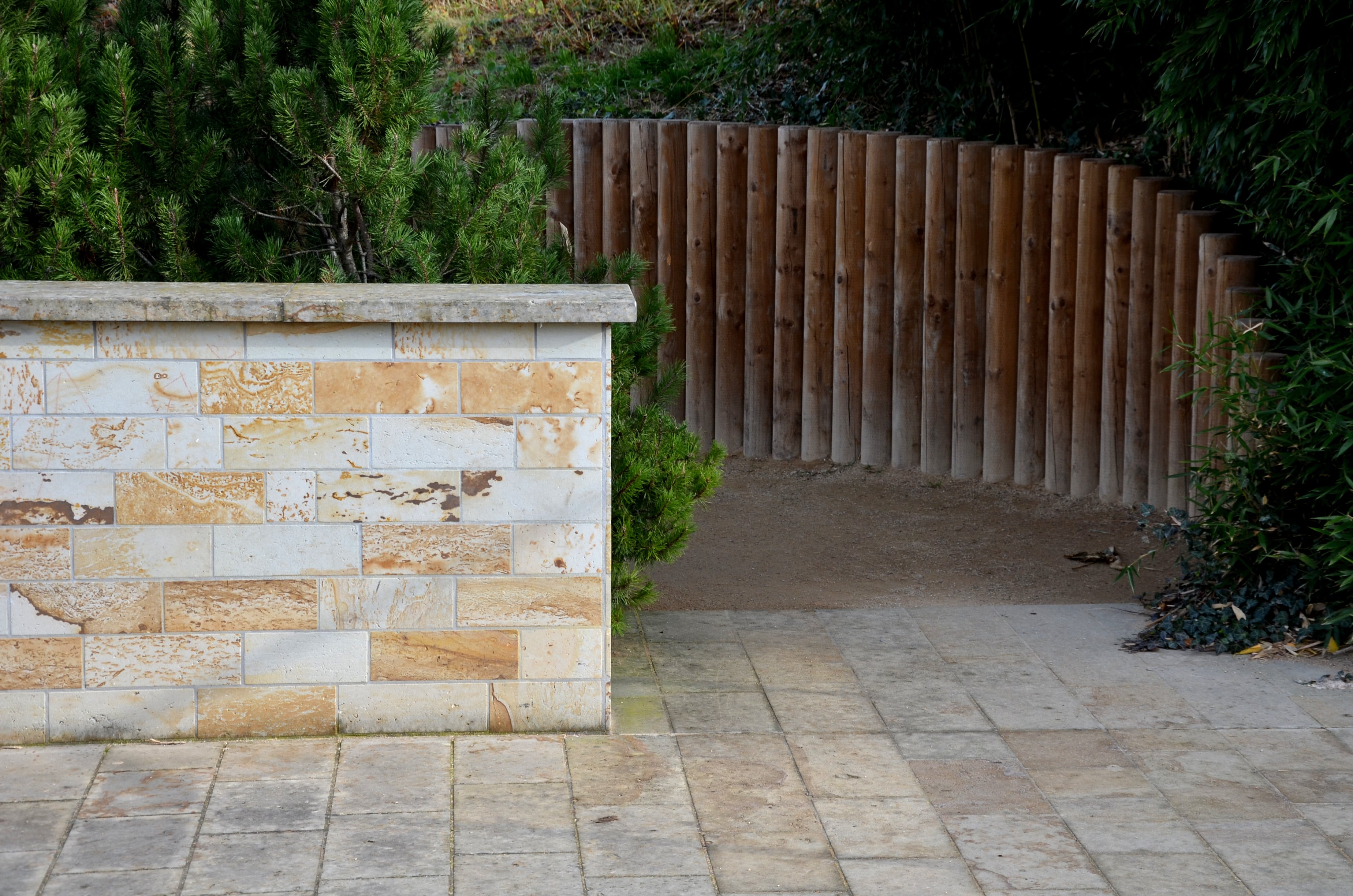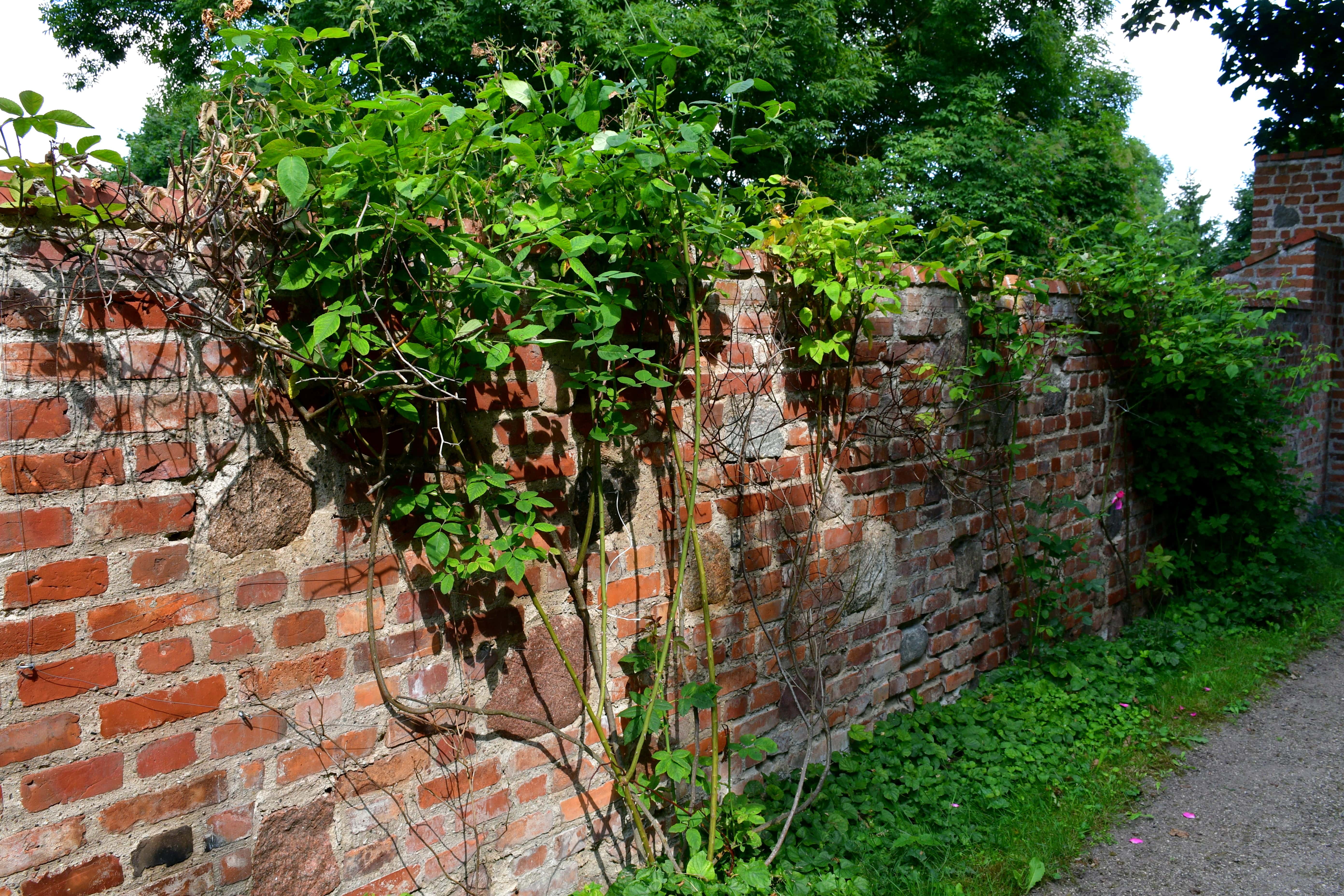20 Retaining Wall Ideas for Your Yard
From increasing curb appeal to preventing erosion, retaining walls do it all


There are many reasons to invest in a retaining wall for your back or front yard, from land preservation to property value. Retaining walls sharpen the overall appearance of an outdoor space, particularly when they’re surrounding thriving greenery and vibrant flowers. They also work to prevent erosion and level out properties that have an incline. If you’re planning to install a retaining wall and are feeling stumped, this list of retaining wall ideas can help you kick off the endeavor on the right foot.
1. Natural Stone

A retaining wall composed of stacked stones such as this makes for a rustic addition to a variety of property types. The natural stone pieces fit together like a puzzle, and despite the seemingly mismatched composition of each stone fragment, the result is a flawless-looking wall that appears rather effortless.
2. Mixed Rocks

To add even more depth to stone retaining walls, combine rocks of different sizes, shapes, and colors. You'll find a shockingly wide variety when it comes to the many types of landscaping rocks available on the market, from gentle river rocks to large boulders. The unexpected pairing of rock colors gives the finished product an artistic vibe that emulates the feeling of walking through a sculpture garden instead of a front yard.
3. Boulder Wall

Perhaps no retaining wall material will elicit a sense of being within nature more than boulders. While attractive to look at, boulders are also long-lasting and won’t succumb to weathering or erosion. Retaining wall prices are between $40 and $200 per linear foot, though boulders are often quite budget friendly due to their size and rugged look. They allow for natural water drainage, which also gives them an edge against other retaining wall materials that don’t readily provide access for water to drain through them. Just make sure to hire a retaining wall installer near you since boulders may be too heavy to build a retaining wall on your own.
Any time water pools and collects you risk drowning your plants or, even worse, fungus growth. Fungus loves to grow in wet areas. If it doesn’t dry it can kill your plants, grass, and the surrounding yard.
4. Gabion Wall

Another example of retaining walls that offer easier water drainage is gabion walls. Gabion walls are designed to slow down runoff water and stabilize slopes, making them a good option for homes on uneven ground. Keep in mind, however, that the wire baskets used for gabion walls can be susceptible to wear and tear over time, which may not make them worthwhile in terms of longevity. Since gabion walls can look a little more industrial, pair them with one of the many stylish rock garden ideas to blend the tough with the soft.
5. Steel

Steel is one of the most widely used materials for large and small retaining walls. Two positive features of steel retaining walls are that they can be installed in a timely manner and are load-bearing from the moment of installation. They’re also incredibly durable and adept at redirecting rainwater.
6. Aspen Logs

Wooden retaining walls are another popular choice, but require a bit more upkeep than other wall materials. Undoubtedly, retaining walls made from wood such as aspen logs add an aesthetic element that’s hard to beat. The downside to that is the fact they need to be treated routinely to protect against the elements they endure outside.
7. Classic Brick

Brick is another timeless choice for retaining walls because of their appearance and durability. However, brick retaining walls lean on the expensive side and lack flexibility. While you’ll be limited in color options when choosing brick for a retaining wall, they do pair well with brick and Colonial-style homes. Opting for brick can lower your overall hardscaping costs, ranging between $20 and $25 per square foot for a retaining wall.
8. Wood Planks

Wood planks create a gorgeous wooden retaining wall, but attention must be paid to where water pools on your property to ensure the wood lasts as long as possible. A benefit of using wood planks is that it’ll cost less than other materials, such as brick or concrete, and it could potentially be a DIY project for those with experience building retaining walls. Note that wood has a tendency to splinter or rot over time, so keep that in mind when determining if it is the right material to source for your retaining wall.
9. Concrete

Concrete is another tried-and-true composition material for retaining walls. A concrete retaining wall is strong and long-lasting, and opting for one opens up the opportunity to choose from a variety of styles and colors, from poured concrete to concrete blocks. Concrete is considered to be reasonably priced for what you get out of it in the long run, as you generally won’t need to replace it for years.
10. Flower Bed

Not only do retaining walls surround raised garden beds, they can feature them as well. Show off your unique landscaping flair with a retaining wall that has inserts for flowers. This retaining wall option could be particularly appealing to those who love flowers but are less inclined to build and maintain a full garden.
11. Incorporated Steps

If your property is on uneven ground or your home sits on top of a steep incline, incorporating steps into your retaining wall could be the ultimate method of achieving function and fashion. These stunning steps carved out of the same stone material as the wall itself tie the landscape together and also make for a perfect setting to take holiday or family photos on. Stone steps cost anywhere from $1,000 to $12,000 to have professionally installed, and the price tag heavily depends on the type of stone you choose.
12. Tiered Walls

Tiered retaining walls create an upscale landscaping appearance and are excellent for those with large flower beds in their yard. The main reasons why homeowners opt for multiple-tiered retaining walls largely have to do with the slope of their property, but also for the aesthetic they create. A properly landscaped yard with retaining walls can increase a home’s property value, on top of preventing runoff and erosion.
13. Plants on the Wall

If you aren’t sold on the idea of adding a plain-looking wall to your yard, let your green thumb shine by methodically growing plants and looming flowers near or in front of the retaining wall and allow the overgrowth to do the rest. The twisting vines and leaves will begin to climb along the wall, resulting in an enchanted appearance.
14. Illuminating Lights

A retaining wall doesn’t have to be limited to daytime hours to be a beautiful focal point of your landscape. Having lights installed onto the wall will help illuminate your yard at night, and by doing so can create a safer environment for parties that last late into the evening. The cost of landscape lighting ranges by project and often requires the help of an electrician. More specifically, uplighting against a retaining wall costs between $100 and $400 per fixture.
15. Open Seating

Whether it be a traditional bench in your front yard or an elongated, open bench style-seating in the backyard near a pool, you can make the most out of a retaining wall by giving it a secondary duty of acting as additional seating. Subsequent costs should be expected if you decide to request alterations to the standard retaining wall, but it may be worth the extra money in the long run when you have a permanent sitting option for all to enjoy.
16. Designated Planting Zones

Any front or backyard can transform into a well-organized and multi-layered design with a bit of solid structure. Use a set of retaining walls to separate the flower garden that sits up against your foundation from the flower beds that run alongside your front walkway. Not only does this look cleaner and increase curb appeal, but it also allows you to contain plants that require different levels of irrigation and fertilization.
17. Sloped Garden

As we noted earlier, preventing erosion on your sloped yard often calls for a tiered retaining wall. Take the opportunity to add greenery to each layer of your tiered wall, particularly with drought-tolerant plants that won't encourage erosion by needing frequent watering. Consider installing a stone walkway along the sides of the slope to better access and enjoy the pockets of the lush garden.
18. Unique Water Feature

Retaining walls create a sturdy base for installing other hardscape elements such as foundations, ponds, and waterfalls. The cost of a backyard water feature ranges between $150 and $11,000, with an average price of $2,700. When adding a fountain, work with a designer to blend the aesthetic of your retaining wall directly with the stones surrounding the water. Include a delicate rock garden with plants that require constant moisture.
19. Framed Outdoor Kitchen

Outdoor kitchens turn a standard backyard into the hosting hub of the neighborhood. Since most outdoor kitchens require a sturdy base to place appliances, add a surrounding retaining wall to separate the area from the rest of your lawn. Outdoor kitchen ideas range from small barbecuing kitchenettes to extensive chef-style layouts with a pizza oven, fireplace, and full dining area.
20. Highlight the Firepit

Safety always comes first when adding a firepit to your property, though style certainly comes second. A retaining wall checks both boxes, closing in the area with the firepit while also blending the stones of the patio into the surrounding landscape. Additionally, consider curving your firepit area to match the circle of chairs that surround your cozy gathering area. You can opt for either a wood or gas firepit, depending on your preference and safety regulations in your area.
Kristin Salaky contributed to this piece.





- Landscapers
- Tree Surgeons
- Gardening Services
- Landscape Architects
- Sod Installation
- Tennis Court Contractors
- Landscape Design
- Retaining Wall Companies
- Grading Companies
- Landscape Rock & Sand Delivery
- Mulch Delivery Services
- Pond Companies
- Artificial Grass Companies
- Shrub Removal & Trimming
- Backyard Design Companies
- Commercial Landscaping
- Koi Pond Services
- Backyard Landscapers
- Trampoline Assembly
- Hedge Trimming
- Pond Services
- Garden Design
- Outdoor Plant Watering
- Putting Greens
- French Drains
- Turf Installation
- Sod Removal Services
- Lawn Repair Services
- Brush Chipping Services
- Hardscape Contractor
- Landscape Rock Removal
















